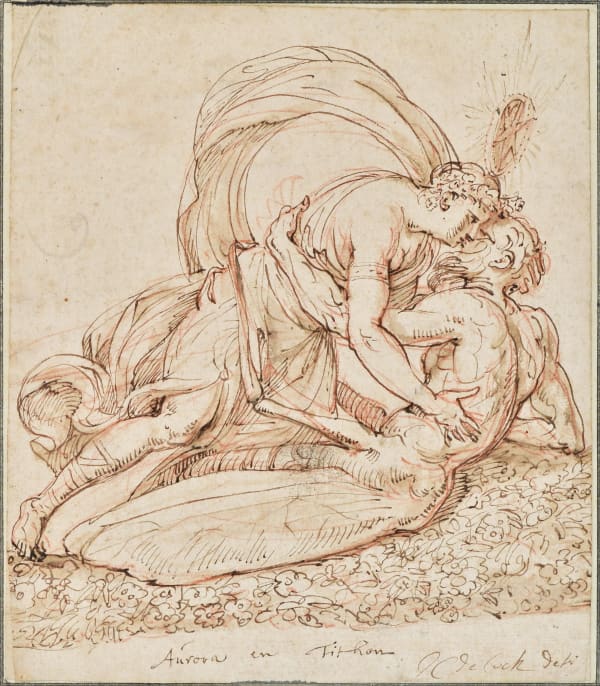Jan Claudius de Cock (Brussels 1667 - 1736 Antwerp)
Jan Claudius de Cock was a Flemish sculptor, engraver, and art dealer active during the late 17th and early 18th centuries. He was born in Brussels on February 6, 1667, to Claudius de Cock and Magdalena van Havré. At fifteen, he apprenticed in the workshop of Pieter Verbruggen the Elder in Antwerp. By 1688 or 1689, he was registered as a master sculptor in the Antwerp Guild of Saint Luke. From 1692 to 1695, he worked under King-Stadtholder William III on sculptural decorations for the interior and exterior of the Prinsenhof in Breda, also known as Breda Castle.
De Cock was a productive and versatile sculptor, draftsman, designer, and poet. His sculptural compositions, often in marble and wood, showcased dynamic movement and intricate detailing, influenced by Peter Paul Rubens and Artus Quellinus. He received commissions for religious sculptures, altarpieces, and decorative works throughout the Southern Netherlands, including Antwerp and Ghent. Additionally, he created garden sculptures that were installed in various locations within and beyond the Netherlands. In 1699, he produced a unique series of drawings depicting mythological sculptures, which are believed to be designs for garden statues. These drawings are preserved in the Herzog Anton Ulrich-Museum in Braunschweig. By studying these works, scholars may attribute more garden sculptures to his oeuvre in the future.
Beyond his work as a sculptor, de Cock was an accomplished engraver, creating designs for book illustrations and ornamental prints. His engravings played a role in disseminating the visual culture of the Flemish Baroque and contributed to his reputation as a versatile artist. His skills as a draftsman were highly regarded, with the writer Jacob Campo Weyerman praising him as a great draftsman. De Cock established a large workshop in Antwerp, where he trained at least thirteen students in sculpture and drawing. In 1720, he wrote a treatise on sculpture titled Eenighe voornaemste en noodighe regels van de beeldhouwerye, a poetic guide providing practical advice for aspiring sculptors. He also composed a jubilee poem in 1718 for his 25th wedding anniversary to Maria Clara Serlippens, in which he revealed his devout nature. The poem mentions that he lost two sons and a daughter at a young age. Jan Claudius de Cock passed away in early 1735 in Antwerp. After his death, his daughter moved to The Hague, where she reluctantly sold some of his marble sculptures and models. Though less widely known today than some of his contemporaries, his contributions to Baroque sculpture and engraving remain significant in the history of Flemish art.
In 1698/9, de Cock produced a unique series of drawings depicting mythological sculptures, which are believed to be designs for garden statues. Currently preserved in the Herzog Anton Ulrich-Museum in Braunschweig, these works may help scholars attribute more garden sculptures to his oeuvre in the future. The present work, depicting a Bacchante, is very close to these works, and especially to his design for a Faunus (see fig. 1), being similar in style and size as well as dated to the same year 1698.
Provenance
With Paul Prouté, Paris, 1925;
Auction Hamburg (Hauswedell), June 8th 1972, no. 24, illustrated;
Germany, private collection;
Belgian private collection.
Literature
Catalogue Prouté 1925, p. 2, no. 16 (as by J.C. de Cock: ‘Bacchante, debout, tenant des cymbales. Dessin à la plume 0m34 x 0m20, signé. 30 fr.’).- X
- Tumblr


